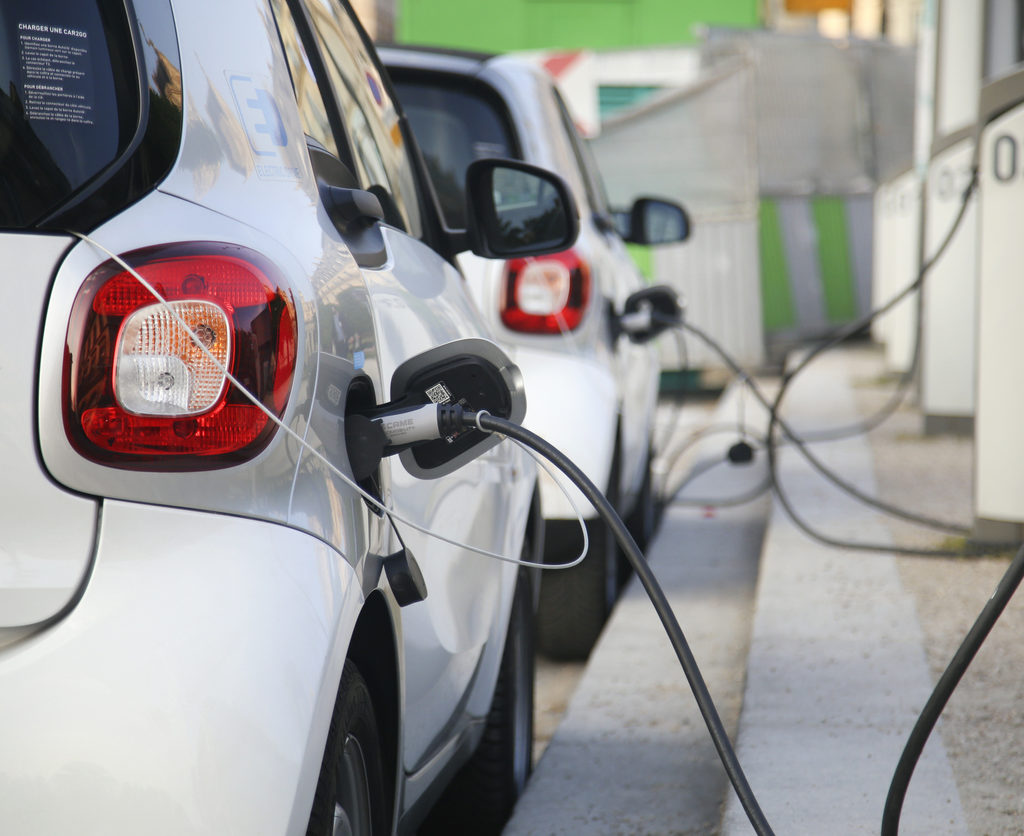Peter McBurney has been a member of the Uniting Church since its formation. He and his wife Louisa Vorreiter leased their first Prius hybrid petrol electric car in 2006. They now own two fully electric cars that have no petrol engines at all and their three sons all drive hybrid or plug-in hybrid electric cars.
Peter recently gave a talk to the Uniting Church Action for Society and Environment (UCASE) Group about the benefits of low and zero-emission cars. What follows reflects part of that presentation.
Q. Peter, few people in Australia seem to drive electric cars. What got you involved in them?
A. Louisa and I wanted to reduce our household’s carbon footprint to play our part in reducing damage to the planet caused by greenhouse gas emissions. This was an important part of that commitment.
Q. How would you compare the driving performance of the electric & hybrid vehicles to petrol and diesel vehicles?
A. The fully electric cars are much more fun and relaxing to drive. They have far better acceleration and their lower centre of gravity gives them very good handling. They use regenerative braking so you can very often drive without needing to touch the brakes. It’s amazing.
Over the decades we’ve had Holden and Ford station wagons and two Taragos, which we used for towing, camping trips as well as city driving. We moved away from the big gas guzzler station wagons to the Prius.
Then four years ago we bought a used Mitsubishi Outlander Plug-in Hybrid Petrol and Electric AWD to replace our second Tarago, and used the Outlander to tow a trailer. Overall it averaged only 2.2 L/100km including long towing trips. Around the city it used almost no petrol at all and we could charge it at home either from our solar panels or overnight on off peak 100 percent green power.
This Outlander convinced us of the value of plug in electric vehicles, so we decided to take the next step and go to a fully electric car: no petrol at all. In April 2019 we replaced the Prius with a fully electric Hyundai Ioniq Battery Electric Vehicle. It has no petrol tank, no tailpipe, zero emissions and a 200-280 km range. Now we also have a Tesla Model 3 with 500km range and we can use it to tow 750kg loads of canoes and camping gear as Scout Leaders.
The electric cars cost about 20 percent in fuel costs to run compared to petrol and there is almost no maintenance required.
Q. How does Australia compare to other countries when it comes to people driving electric versus petrol or diesel vehicles?
A. Many other similar countries have less polluting cars than we do.
I’ll give combined percentages for new vehicle sales of all types electric cars you can plug in (ie. combined sales of fully electric cars and plug in hybrids):
- Australia 0.6 percent,(2019)
- US 2.1 percent, (more than three times better than us)
- NZ just under three percent,
- Greece and Spain three percent
- China and Italy: four percent
- France and the UK about 10 percent (more than 16 times better than us)
- Germany last month about 15 percent
- Iceland 25 percent last year
- and last month in Norway 81 percent, including 61 percent pure electric vehicles.
Q. Why do you think other countries are so much more advanced than Australia in this area?
A. We are way behind other countries because we just don’t have standards for carbon emissions.
In Europe this year, all car manufacturers must average no more than 95g/km of carbon emissions for each new car they sell.
If they don’t, they have to pay enormous fines or they can’t sell cars in the market. This means they need to produce a lot of very low emissions or fully electric cars to offset some of the more polluting cars they sell.
Europe will reduce this by a further 15 percent by 2025, and there will be a further 37.5 percent reduction by 2030.
Some countries will totally ban the sale of vehicles that emit greenhouse gases. For example it will be illegal to sell new petrol diesel or carbon emitting gas cars in the UK by 2035 at the latest.
In Australia, we have no standard at all. Our average carbon emission for new cars is 180.9g/km, which is nearly double Europe’s. Europe is actually stepping theirs down until it reaches zero.
Also, in many other countries, governments recognise their responsibility to help accelerate the change to cars that are better for the climate, human health and other species, so they subsidise them and put other incentives in place.
Q. Do you have any other messages for people who drive a petrol or diesel vehicle?
A. Petrol and diesel cars emit many poisonous gases and particles including carbon monoxide, nitrous oxides and particulate matter that cause sickness and deaths from cardio-vascular and respiratory disease, bronchitis, asthma and cancer. They also cause eye and skin irritation. In 2019, a report found that approximately 650 people died in NSW alone due to vehicle emissions from internal combustion vehicles. That equals about 2,000 nationally.
Petrol and diesel emissions are a huge health hazard to people, other species and our whole planet’s ecosystem.
There is now a growing second hand market of electric and plug-in hybrid vehicles, which can make the transition more affordable. Think about the big picture when making your next decision to buy a vehicle and aim to transition towards something that’s kinder to the overall environment. We have a very good and constantly improving charging network in place. The cars are highly advanced and reliable, safe, very cheap to run and maintain and lots of fun to drive.
Peter McBurney and Lynda Cameron













